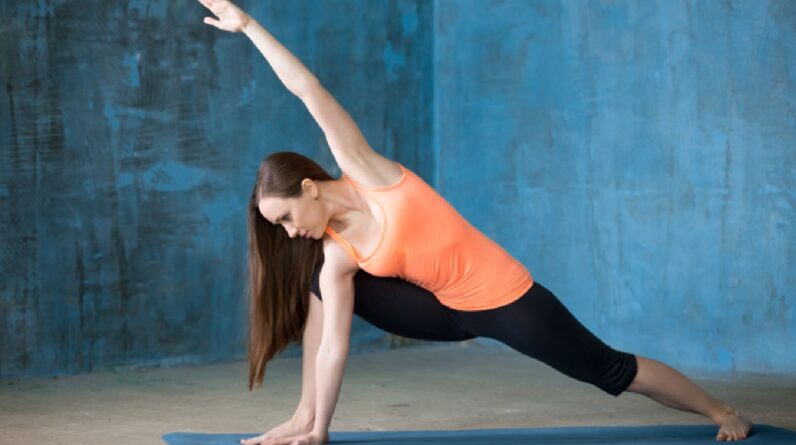
Utthita Parsvakonasana offers many health benefits, especially for the lower body. Let us tell you how to do the Extended Side Angle pose to tone thighs and hips.
Utthita Parsvakonasana or the Extended Side Angle Pose can strengthen your thighs, hips and ankles. It is a great side body stretch, but not very easy to do. If you are a beginner, you may slouch, lean too far forward or backward. Holding tension in the neck and shoulders instead of relaxing them is another common mistake beginners make while doing the Extended Side Angle Pose. Let us tell you how to do Utthita Parsvakonasana to tone your thighs and hips, and its health benefits.
What is Utthita Parsvakonasana?
Utthita Parsvakonasana, also known as Extended Side Angle Pose, is a powerful yoga asana that provides a perfect blend of strength, flexibility, and mindfulness. It is a yoga pose that involves stretching the sides of the body while strengthening the legs, arms, and core muscles, says yoga expert Dr Hansaji Yogendra.
What are the health benefits of Utthita Parsvakonasana?
This yoga pose is known for many of its health benefits:
1. Tones thighs and hips
Utthita Parsvakonasana effectively tones the thighs by engaging the quadriceps and hamstrings while lengthening the adductor muscles. The pose requires constant engagement of the leg muscles, leading to increased muscle endurance and toning over time, says the expert.

2. Enhances balance and stability
It is a yoga asana that can significantly improve balance control and stability. This way it helps to reduce the risk of falls, which is common as you grow older, and enhances overall physical performance.
Also Read

3. Stimulates abdominal organs
The twisting action in the Extended Side Angle pose massages the abdominal organs, including the stomach, liver, spleen, and intestines. This gentle compression and release facilitate blood flow and lymphatic drainage, aiding in digestion and detoxification. Such twisting yoga poses can stimulate the rhythmic contraction of intestinal muscles, promoting regular bowel movements and alleviating symptoms of gastrointestinal discomfort.
4. Stress reduction
In Utthita Parsvakonasana, the combination of mindful movement, deep breathing, and physical exertion triggers the release of endorphins, neurotransmitters that elevate mood and promote a sense of well-being. Regular practice of Utthita Parsvakonasana can help you manage stress more effectively and cultivate a greater sense of calmness, says Dr Hansaji.

How to do Utthita Parsvakonasana?
Here are the steps to do Utthita Parsvakonasana or Extended Side Angle pose:
- Stand in the centre of mat with your feet at a comfortable distance from each other.
- Turn your right foot out at 90 degrees and move your left foot in the same direction at 45 degrees.
- Bend your right knee at 90 degrees and slowly go down. Keep your thigh parallel to the ground and breathe.
- Incline your body over the right leg. At the same time, reach down with your right hand and rest it inside or outside of the right foot, depending on your comfort level.
- Bring your left hand parallel to the left ear and over the head with the palm facing down. Feel the stretch on the left side of your body from the feet to the fingers.
If possible, you can look up from under your left armpit to the ceiling. - Breathe deeply for some time while you hold this final pose.
- To release the pose, lower your left arm on the left thigh, straighten your right knee, straighten your body then repeat on the other side.
If you have high blood pressure, migraine, shoulder or neck injuries, or recently had abdominal surgeries, avoid this yoga pose. Pregnant women should also avoid it, as the twisting motion is not suitable during pregnancy.
Doing Utthita Parsvakonasana can bring many benefits, but it is essential to practice it carefully and with proper alignment to avoid injury.







